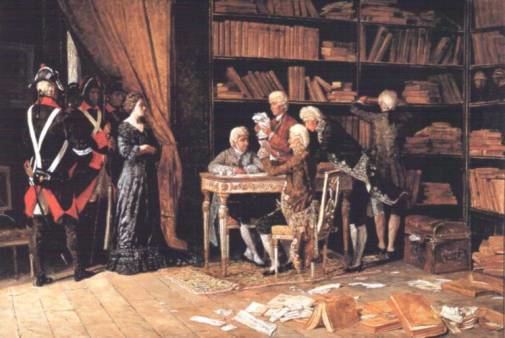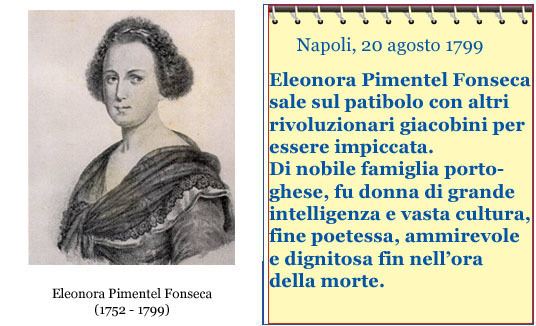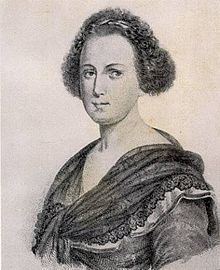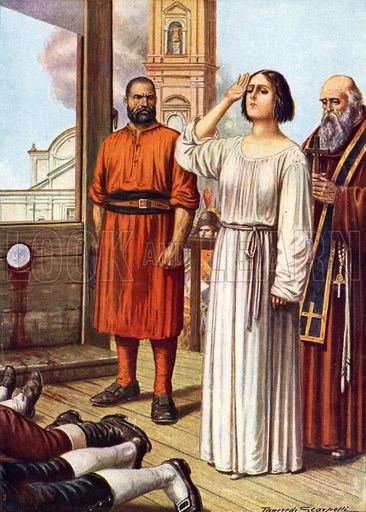Name Eleonora Pimentel | Role Poet | |
 | ||
Died August 20, 1799, Naples, Italy | ||
Eleonora Anna Maria Felice de Fonseca Pimentel (born Leonor da Fonseca Pimentel Chaves; 13 January 1752 – 20 August 1799) was an Italian poet and revolutionary connected with the Neapolitan revolution and subsequent short-lived Neapolitan Republic (also known as the Parthenopean Republic) of 1799, a sister republic of the French Republic and one of many set up in the 1790s in Europe.

Biography

Pimentel was born in Rome of Portuguese nobility. She was a precocious child who wrote poetry, read Latin and Greek and spoke several languages (Italian, Portuguese, French and a little bit of English) As a child, she moved with her family to Naples as a result of political difficulties between the Papal States (of which Rome was the capital) and the Kingdom of Portugal.

In the 1770s she became an important part of literary circles of the day in Naples. Much of her literary output was given over to voluminous exchanges of letters with other literati. Most prominent of these is a long correspondence in the 1770s with Metastasio, the Italian court poet in Vienna and greatest librettist of the 18th century, and Voltaire. In 1778 she married Pasquale Tria Solis, lieutenant of Neapolitan Army and, in October of the same year, she gave birth to Francesco. However, the infant died about eight months later. He was the only child from Eleonora because of mistreatment by her husband which caused her two abortions. In the 1790s she became involved in the Jacobin movement in Naples that was working to overthrow the monarchy and establish a local version of the French Republic. She was one of the leaders of the revolution that overthrew the Bourbon monarchy and installed the Parthenopean Republic in January 1799.
For the short life of that republic, she was the director of Monitore Napoletano the biweekly newspaper of the Republic - named in emulation of Le Moniteur Universel in France -, and she edited and wrote most of the material. When the Republic was overthrown and the Bourbon monarchy restored in June 1799, she was one of the revolutionaries executed by the royal tribunals implemented by the restored monarchy.
She was arrested, processed and later sentenced to death, by hanging, on 20 August 1799. Death penalty for noble people was traditionally beheading and not hanging, but as a Jacobin she wasn't a noble woman anymore, having given up her title of marchioness. She asked in any case to be beheaded, because the public hanging of a noblewoman was seen as something quite outrageous, but there was no mercy. Eleonora Pimentel had not committed any crimes during the revolution. She only edited newspapers and worked as a journalist.
Reportedly, a main reason for the restored monarchy insisting on her execution were pamphlets she wrote denouncing Queen Maria Carolina as a lesbian.
